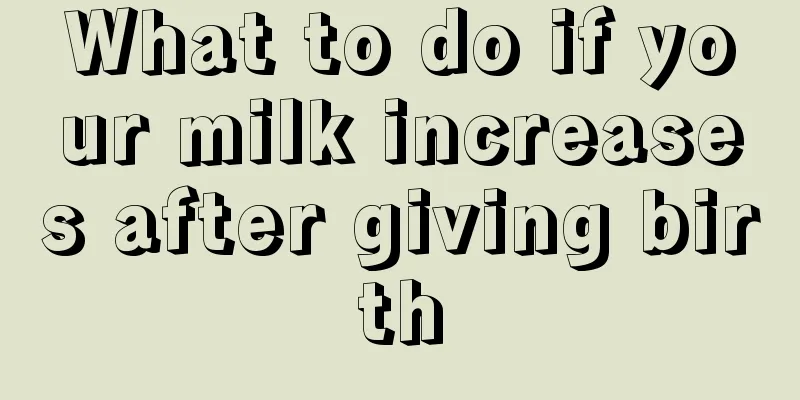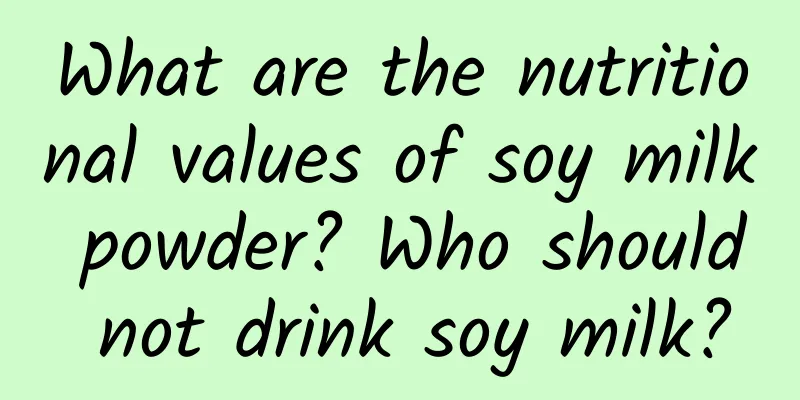What to do if your milk increases after giving birth

|
Breast engorgement is a common phenomenon for breastfeeding women. If breast engorgement occurs, timely measures must be taken to relieve it. Failure to do so may cause women to experience extreme pain and even cause diseases such as mastitis. So, what should you do if your breasts swell after giving birth? The following will give you a detailed introduction! 1. What to do if your breasts swell after giving birth Soak in warm water. If conditions permit, you can take a hot bath. If it really doesn't work, you can get a basin of hot water and place it on a low table or chair (stool), then slowly bend your upper body so that your breasts can be soaked in the basin, then gently shake your breasts to allow the force to slowly flow out the milk. 2. Hot Bath When your breasts are really painful, it is better to take a hot shower and gently massage your breasts while showering. Massage is beneficial to activate breast blood vessels and help relieve breast swelling and pain. However, don't stay in the bathroom for too long just for the sake of comfort. If you catch a cold during the early breastfeeding period, it will not be good for both the mother and the baby. 3. Massage If you feel breast tenderness, try gentle massage. After washing your hands, grab your breasts and apply even force, gently moving from the chest toward the nipple. This can help unclog the milk ducts and help relieve breast edema. If you find obvious swelling and pain in a certain area during the massage, you can increase the force appropriately to discharge the accumulated milk to prevent milk from clogging the milk ducts and causing breast pain. 4. Cold compress If breast pain has reached an unbearable level, you may want to try cold compresses. Wet a towel with cold water and apply it to your breasts. The cool sensation of the cold water can relieve pain, but you must remember to squeeze out the milk before applying the cold compress, and make sure to use cold water, not ice water. The cold water is just the right amount of chilliness. 5. Use a breast pump When the breasts are swollen, the baby's absorption can indeed help pregnant mothers reduce the swollen breasts, but the baby's stomach is so small that it is impossible for him to eat all day long. Therefore, if you only rely on breastfeeding to reduce the swollen breasts, it is obviously not so good. So at this time, you need to use a breast pump. When the baby is full, you can use the breast pump to wash out the excess milk, so that there will be no obvious feeling of breast swollen breasts. |
<<: I have a lot of vaginal discharge after my period.
>>: Excessive vaginal discharge after pregnancy
Recommend
What is 4D Color Doppler Ultrasound?
When doing examinations, you will often encounter...
Why do I have back pain during the seven and a half months of pregnancy?
In the first three months of pregnancy, pregnancy...
What should pregnant women eat if they have strong liver fire?
Liver fire can cause nausea and vomiting in pregn...
When is the best time to clear the fallopian tubes?
Fallopian tube obstruction is a disease that is p...
How long does it take for the uterus to recover after a cesarean section?
The recovery time of the uterus after cesarean se...
It's a little swollen and itchy down there
Most women in life will have some gynecological d...
How to cook leeks and what are the ways to eat them? Can leeks and potatoes be eaten together?
Leeks contain a lot of nutrients such as fiber, v...
Is it serious if I suddenly have large blood clots during my period?
During menstruation, there may be relatively larg...
How to eat when you have breast cancer during lactation
As we all know, good health is the most important...
Why do girls get hard pimples down there?
Many people have experienced this phenomenon in t...
How to quickly relieve milk blockage
For breastfeeding mothers, daily life is not only...
Left occipital posterior fetus
The left occipital position is a relatively commo...
Why do women always feel tired and sleepy?
Women's physical abilities are much lower tha...
The reason why a woman suffers from heel pain
I believe that many people have experienced heel ...
Walking training for stroke patients Walking training for stroke patients
Introduction: Stroke is a common disease in my co...


![[Medical Q&A] How can patients with hypertension “limit sodium and increase potassium”?](/upload/images/67f0f0c36499e.webp)






